The Risk-Reward Proposition for CGT Clinical Trials
As activity in this space grows, so do the hurdles in moving these products forward.
Cell and gene therapy (CGT)—its risks and promises—are succinctly summarized in this description of clinical trial number NCT01129544, a Phase I/II study in children born with X-linked severe combined immunodeficiency (SCID-X1), an inherited, rare, and life-threatening disease. The eight-person trial, which began in May 2010, continues today. The following paragraph has been edited.1
Gene transfer is still research for two reasons. One, not enough children have been studied to tell if the procedure is consistently successful…. [And] we are still learning about its side effects and doing gene transfer safely. In previous trials, five children developed gene transfer-related leukemia; four are in remission; one died.
If the above information has stifled the research community’s scientific curiosity about CGT, it is not evident. Evidence from numerous sources—ClinicalTrials.gov, the Alliance for Regenerative Medicine (ARM), FDA—are chock-a-block with studies, trials, and figures showing these therapies’ popularity. In the second quarter of 2022, 3,633 such treatments were in development, up from 1,745 in May 2021. The vast majority are in the preclinical stage.2,3
Some sources are revealing more.
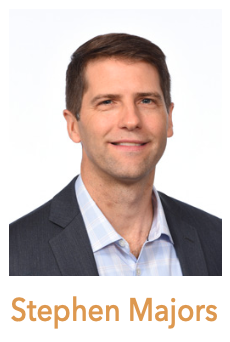
Most indicate that academics now have a remarkable presence in the CGT development space, including sponsorship. Last year, for the first time, ARM included sponsorship figures in its twice-annual industry report.4 Academic- and government-sponsored trials far exceeded industry for sponsored trials in CGT. Stephen Majors, senior director for public affairs, ARM, says the alliance knew of academia’s presence for the past few years, but only was able to get data this year from its partner, Global Data.
Less reliable, but still noteworthy, are data from ClinicalTrials.gov: for active Phase I trials, industry has 89; “others,” which covers academia and government, have 50. Industry enrollment for Phase I is 172; others, 116. Phase III is one for others, eight for industry.
A little disruption in pharma’s corner of the world? It seems that way. While basic bench to preclinical to clinical trial has long been the traditional route to FDA approval—and no one interviewed for this article suggested a reroute—what it does imply is that pharma members have some competition from the spin-offs and academic biotechs that historically they have absorbed.
“There are suspected trends that we are watching,” says Majors. As to whether academia’s presence in this spot can be called a trend depends on one’s definition of what a trend is. The Centers for Disease Control and Prevention (CDC) considers changes over a number years to determine a trend; financial investment firms typically evaluate over a two-year period. Considering that CGT companies raised $23.1 billion in 2021, 16% more than 2020,3 the answer to the above question could be, maybe.
The CGT space is still immature, according to Mike Rea, founder of Protodigm, a self-described exploratory research organization that partners with biopharma clients on alternative development and commercial solutions. Physicians need time to be comfortable with these therapies, notes Rea, so they may not be used on a regular basis.
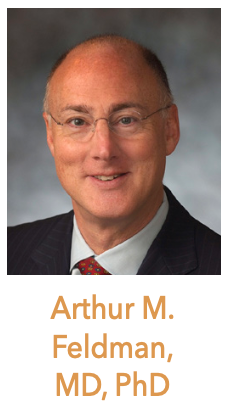
For example, physicians have to understand how to deliver the gene, agrees cardiologist Arthur M. Feldman, MD, PhD, whose lab worked on a heart failure-related mutation in BAG3 for decades.
Last month, the company he founded, Renovacor, agreed to be acquired by Rocket Pharmaceuticals.5 “We are asking physicians to do something they never did before and to understand a very different set of information, including risk/benefit discussions that they didn’t learn about in medical school,” he says. Feldman is a Laura H. Carnell Professor of Medicine, Division of Cardiology, and a member of the Center for Neurovirology and Gene Editing at the Lewis Katz School of Medicine at Temple University.
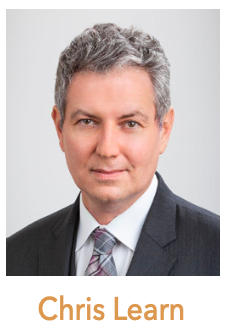
Chris Learn, Parexel’s vice president of cell and gene therapy, is unequivocal regarding academia’s increased presence in the drug development space focused around these treatments. He cites MD Anderson and Moffitt Cancer Center as two institutions that are sponsoring their own trials. “The lines are really blurring here,” he tells Applied Clinical Trials. “It is indisputable.”
The numbers
The following is a look at how academia is showing up in various reports.
In its 2022 report4, ARM separated sponsorship, type of therapy—gene, cell-based, and tissue engineering—and trial phase. What these data show are industry far exceeding academic and government sponsored trials for gene therapy, while for cell therapy alone, the reverse is true: 656 cell therapy trials for academic and government, and 424 for industry. For gene therapy, there are 84 for the academics and government, and 222 for industry. In a later report, ARM found non-industry trials dropped.
Pharma Intelligence’s Pharma R&D Annual Review does not break down trials by their sponsors. It does, however, break down what’s in the pipeline in various categories, including by the number of therapies per company, and by disease type.6 In numbers captured prior to March 2020, the analysis reported 1,849 companies with a single drug in its pipeline, up from 1,633 in 2019, comprising more than half of all drug companies. As for types of therapies, gene therapy was in third place, the same spot it occupied in 2019. (Cancer-related therapies occupy the top spots.) Overall, biotech therapies in the pipeline increased by 13.2% in 2020 over 2019—6,135 vs. 5,422. Cellular therapy, the field in which academia is dominating, rose to 14th place, up from 33.
A decades’ long tale of the heart
In 1982, Feldman was a resident in the cardiac care unit at the Johns Hopkins Hospital in Baltimore when he took care of a 22-year-old woman, a native Pennsylvanian, who was dying of heart failure. “Sadly, we didn’t have drugs with which to treat her,” he recalls. Feldman’s involvement with the case and the woman’s family led to his career as a cardiologist, he says. Twenty years later in Philadelphia, he was asked to see a heart-failure patient in consult, who turned out to be the aunt of the younger woman. It would take almost another 10 years until the technology became available to identify the genomic anomaly in this family. Here, a genetic variant that is produced by one of two alleles causes the protein product to be unstable. The result: the cell removes it, so the person with the variant has just half the amount of required protein.
BAG3 is an interesting protein that is found in the heart, the skeletal muscles, and the nervous system, including the brain. Its function is to help remove degraded and misfolded proteins, stop apoptosis or programmed cell death, and maintain the structure of the skeletal muscles. A missing allele isn’t the only genetic cause for heart failure, Feldman said. Other patients, while having the correct amount of DNA, have a point mutation–a single amino acid–in half of the produced DNA. That single letter is the wrong amino acid in the specific site in the protein.
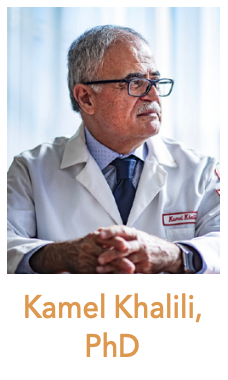
Around this time, Kamel Khalili, PhD, Laura H. Carnell Professor, and chair of the department of microbiology, immunology, and inflammation; director of the Center for Neurovirology and Gene Editing; and director of the Comprehensive NeuroAIDS Center, Lewis Katz School of Medicine, Temple University, had created a method by which he could excise the HIV virus from patients using the new technique of CRISPR-Cas9.
Khalili believes that BAG3 may be involved in the pathogenesis of HIV-1 in brain diseases and protein quality control caused by viral infection as well as several other disorders, including Alzheimer’s disease and dementia. BAG3 changes the homeostasis of the cell, he says. “The only solution is to fix the cell.” Khalili has used CRISPR technology to excise the viral genome in both small and large investigational animals and has recently started a Phase I trial to test the safety of the new gene-editing treatment. Khalili, too, started a company, but Temple holds the license. In the case of Renovacor, it was granted the license by Temple.
“As a scientist, when you are doing something in biomed research, [the] goal is to translate bench work to the clinic for [the] wellness of people. We are doing long hours and long days because we want to help. We are trying to see if discovery can help people,” says Khalili. “I know my limit, I stop at business aspects. My interest is to discover research which can help populations.”
Was Feldman happy with his business experience? “As a company gets bigger, others join the team who fulfill other roles, like acquiring funding or developing the actual product,” he says. “Releasing the control reins are difficult.” But if it speeds up the timeline to get an approved product into the clinic, “then it’s all worth it,” he adds.
Researchers such as Feldman and Khalili, says Kaspar Mossman, PhD, director of communications and marketing at QB3, a University of California biotech accelerator, are normally not deeply interested in business. He notes the new flagship space in UC Berkeley called Bakar Lab. So far, it has 25 companies, one-third from university labs. “They collaborate, they share equipment, [at times] they merge,” Mossman tells Applied Clinical Trials.
And, he adds, “Academics tend to be very smart individuals. The more time they spend in business, they learn stuff and become serial founders,” says Mossman. “They are honest about not wanting to be a CEO.”
In terms of business, the academics’ employers are also pretty smart. The huge bugaboo with CGT commercialization is the manufacturing process—the need for an apheresis unit, ultra-cold storage, and regulated cell processing facilities.
Some institutions are building their own manufacturing facilities to more easily meet the increasingly complicated standards pertaining to regenerative medicine production. Harvard, MD Anderson, Moffitt, the University of Pennsylvania, and the University Hospital of Liege in Belgium8 all have or are planning to build their own facilities.
Pros and cons
As for how academia’s presence impacts the traditional pharma space, those interviewed cited pros and cons. More research is better, more companies vying for venture capital funding is not. But more trials mean more competition among similar therapies, which, says Majors, is a good thing.
“We need experimentation,” adds Rea. If left to pharma, he says, the research wouldn’t happen. “Smaller biotechs are taking the risk.” Over the last 10 years, Rea believes pharma has been slow in the risk-taking department. Once upon a time, pharma didn’t have many competitors. Now, with many numerous smaller companies with viable assets, willing to accept a smaller net profit, the competition is creating some angst. “Pharma can’t project everyone’s movement,” says Rea. “The gene/cell therapy landscape [for products] is huge.”
Likely adding to the angst: Those smaller biotechs are getting financial help. Between April 4, 2021, and June 24, 2021, of 23 start-up financing deals, 19 involved academics.2
Learn’s viewpoint is different. He says there are too many players out there, and while large pharma may be averse to risk, “I really do believe what we are witnessing are simply market forces that have played into this.” There is so much cash coming in, he continues, that “people can be blinded by the pitfalls.” The CGT area, he adds, is “bloated” and he says the industry needs an overall strategy.
Learn doesn’t think that academia’s presence in the CGT space is a flash in the proverbial pan. The enthusiasm to find cures is real, and some research institutions have the endowments to see the trials through. “I think it is just the beginning,” says Learn. “Academia will put their futures in front of them. Why put all your sweat equity into it … and not have any fiduciary benefit of the approved product?”
In Pharma Intelligence’s 2020 Pharma R&D Review, its author questioned the wisdom of so many drugs, overall, in the pipeline—4,001 added in 2018 and 4,730 added in 2019, for a total of 17,737 drug candidates. “[A]re the industry’s eyes getting too big for its belly? Unless it can continue to provide [approved therapies] then a certain degree of control in the pipeline might be advisable,” the report stated.6
And now to costs. While no one doubts these cures change lives, the question of access persists. FDA’s approval of Bluebird Bio’s second therapy this year, branded as Skysona, for early but active cerebral adrenoleukodystrophy, is expected to cost $3 million. Learn doubts that payers are jumping up and down to get Skysona on their formularies.
It’s still a “fairly dicey business proposition” for companies to invest in this field, Steven Pearson, MD, president of the Institute for Clinical and Economic Review (ICER), said recently.8 There’s “still a risk” that next-generation therapies will not flourish “even in developed countries’ health systems,” he added.
One positive development in the US, however, occurred late last month when Congress reauthorized the Prescription Drug User Fee Act (PDUFA) for the next five years, 2023-2027. The action maintained FDA’s authority to collect fees from manufacturers and keep and recruit agency staff to review the increased number of CGT applications. Majors says most of FDA’s review of CGT products involves scalability and consistent reproducibility in the manufacturing process, which, of course, means traveling.
According to a Senate press release9, FDA is seeking to hire at least 320 new staff members. In a statement, Pharmaceutical Research and Manufacturers of America (PhRMA) said a “modern regulatory framework supported by PDUFA helps ensure patients have timely access to lifesaving medicines.”
Keeping pace
PDUFA reauthorization aside, there is little argument that the field of CGT, from research and drug discovery through commercialization, is advancing rapidly. In turn, so are the unique operational and manufacturing challenges that these therapies present. This reality may thin the currently crowded playing field in CGT going forward, with those sponsors and partners best prepared to deliver on the numerous touchpoints required separating from the pack.
Christine Bahls, Freelance Writer for Medical, Clinical Trials, and Pharma Information
References
- Clinicaltrials.gov Gene Transfer for Severe Combined Immunodeficiency, X-linked (SCID-X1) Using a Self-inactivating (SIN) Gammaretroviral Vector. https://clinicaltrials.gov/ct2/show/NCT01129544?term=gene+therapy&recrs=d&type=Intr&phase=0&fund=3&draw=2&rank=4
- ASGT. Gene, Cell, & RNA Therapy Landscape. Q2 2021 Quarterly Data Report. https://asgct.org/global/documents/asgct-pharma-intelligence-quarterly-report-july-20.aspx
- ASGCT/Pharma Intelligence Quarterly Report: Q2 2022. https://pharmaintelligence.informa.com/asgct-report?gclid=Cj0KCQjw7KqZBhCBARIsAI-fTKLZMdW80GEkZY8VEkb6hMpJ4838NveiOXpauuas4OdNW_Tfyxw7CXwaAoHcEALw_wcB
- Cell & Gene State of the Industry Briefing. https://alliancerm.org/arm-event/sotibriefing/
- Rocket Pharma press release. https://ir.rocketpharma.com/news-releases/news-release-details/rocket-pharmaceuticals-acquire-renovacor-extending-leadership. Accessed Sept. 21, 2022.
- PharmaIntelligence. Informa. Pharma R&D Annual Review 2020. https://pharmaintelligence.informa.com/resources/product-content/pharma-rd-annual-review-2020-whitepaper.
- Lechanteur C, Briquet A, Bettonville V, Baudoux E, Beguin Y. MSC Manufacturing for Academic Clinical Trials: From a Clinical-Grade to a Full GMP-Compliant Process. Cells. 2021 May 26;10(6):1320. doi: 10.3390/cells10061320. PMID: 34073206; PMCID: PMC8227789.
- Eric Sagonowsky, Fierce Pharma. Fierce Next Gen: As gene therapies proliferate, pharma and payers look to avoid ‘cost shocks.’ Published online June 30, 2022.
- Burr on FDA User Fee Agreements: Innovation is Key, When FDA Does Not Live Up to Commitments, Patients Suffer. https://www.help.senate.gov/ranking/newsroom/press/burr-on-fda-user-fee-agreements-innovation-is-key-when-fda-does-not-live-up-to-commitments-patients-suffer. 04.05.22
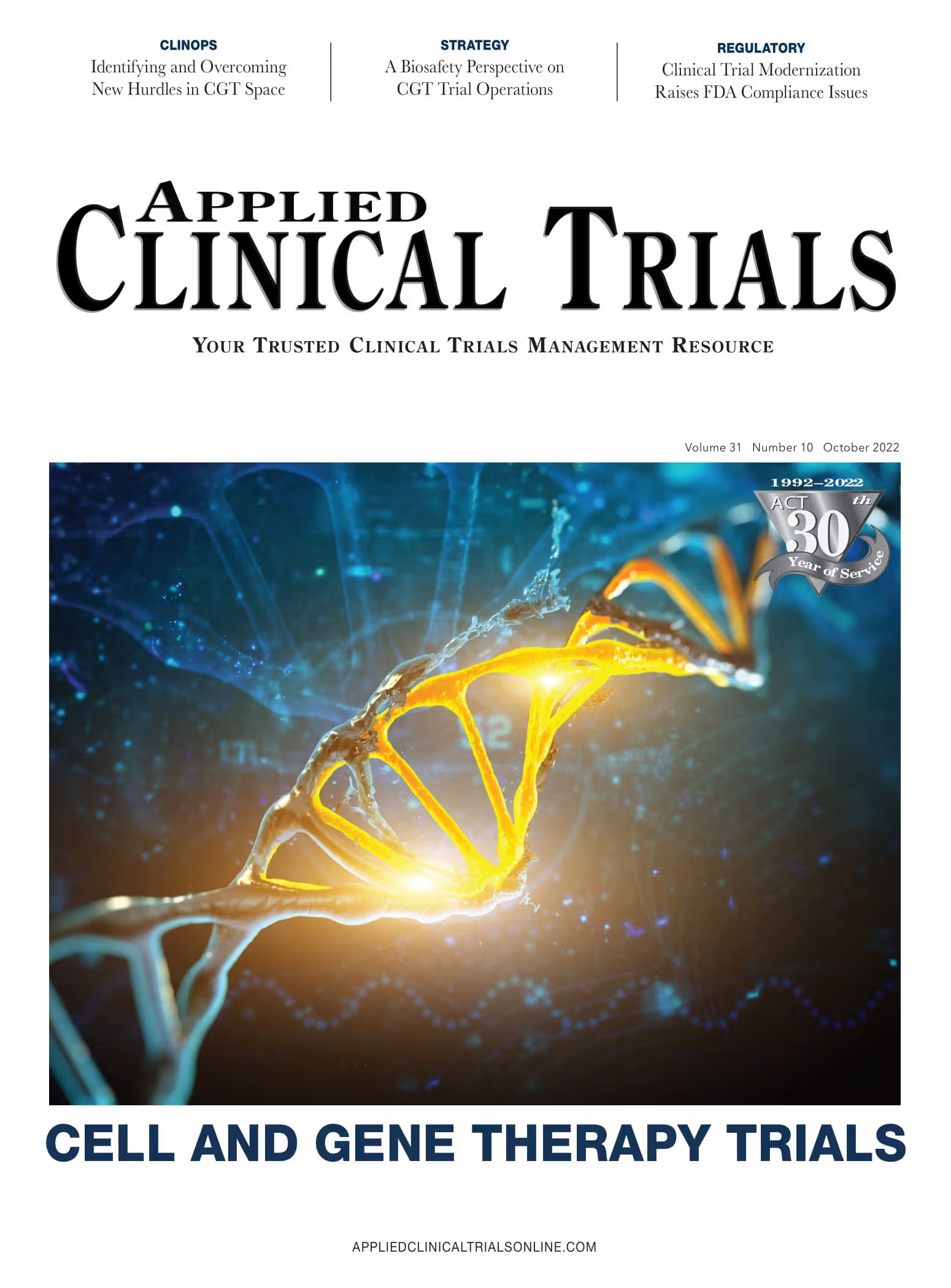
Improving Relationships and Diversifying the Site Selection Process
April 17th 2025In this episode of the Applied Clinical Trials Podcast, Liz Beatty, co-founder and chief strategy officer, Inato, discusses a number of topics around site engagement including community-based sites, the role of technology in improving site/sponsor relationships, how increased operational costs are impacting the industry, and more.
Behind the Buzz: Why Clinical Research Leaders Flock to SCOPE Summit
February 7th 2025In this episode, we meet with Micah Lieberman, Executive Conference Director for SCOPE Summit (Summit for Clinical Ops Executives) at Cambridge Innovation Institute. We will dive deep into the critical role of collaboration within the clinical research ecosystem. How do we bring together diverse stakeholders—sponsors, CROs, clinical trial tech innovators, suppliers, patients, sites, advocacy organizations, investors, and non-profits—to share best practices in trial design, program planning, innovation, and clinical operations? We’ll explore why it’s vital for thought leaders to step beyond their own organizations and learn from others, exchanging ideas that drive advancements in clinical research. Additionally, we’ll discuss the pivotal role of scientific conferences like SCOPE Summit in fostering these essential connections and collaborations, helping shape the future of clinical trials. Join us as we uncover how collective wisdom and cross-industry partnerships are transforming the landscape of clinical research.